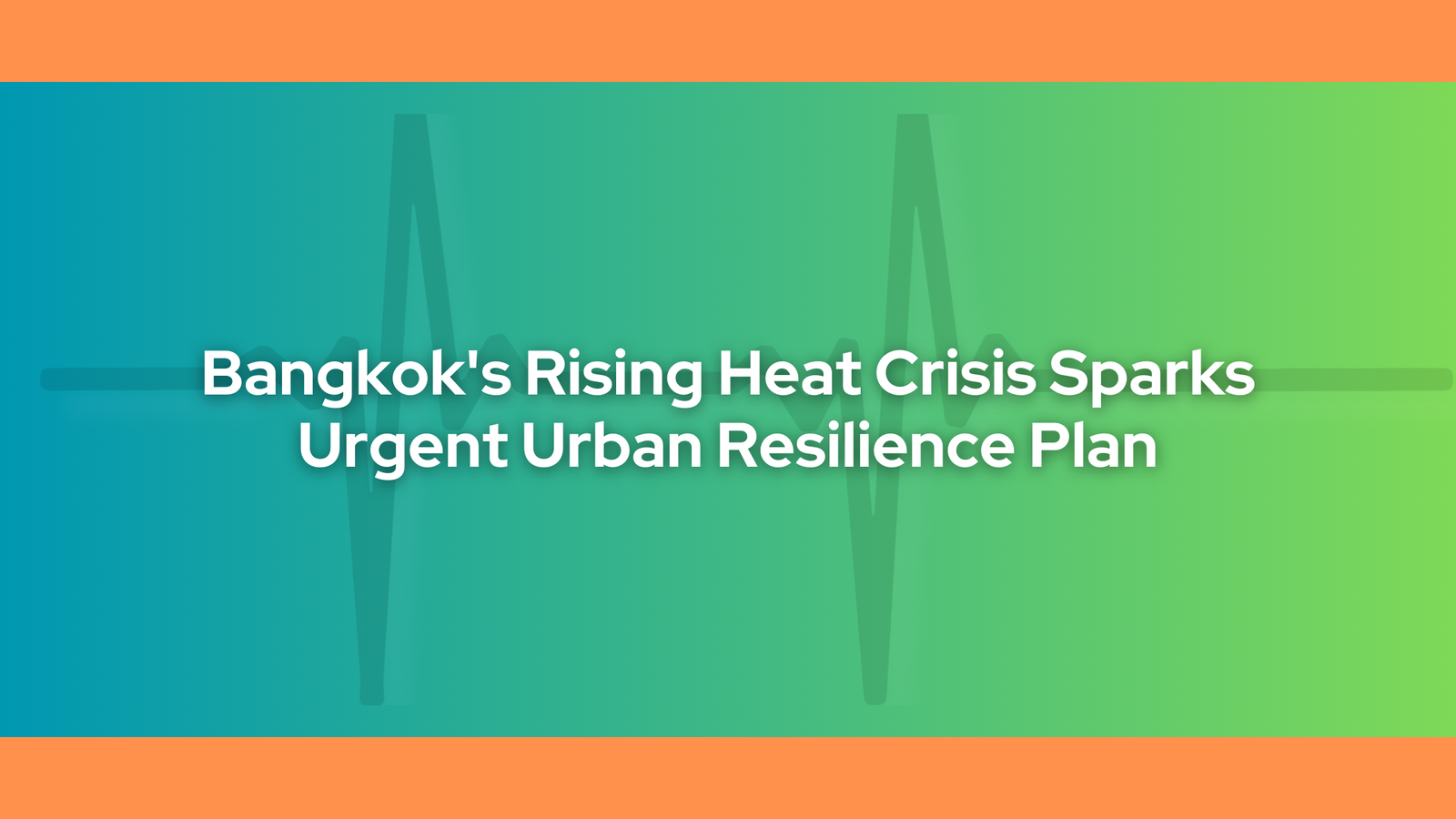
In 2024, the whole world experienced its warmest year, as confirmed by the World Meteorological Organization based on six different datasets around the world. Several countries around the world experienced extreme heatwaves, especially in Southeast Asia. In Thailand alone, the apparent temperature, which is the measurement of how people perceive temperature when humidity is accounted for, reaches 52 degrees Celsius. This prompted Bangkok to issue extreme heat warnings for almost a week. Recognizing this climate threat as one of the most pressing in the region, to beat Bangkok’s rising heat crisis, the city implements a comprehensive plan supported by the World Bank.
On March 26, 2025, the World Bank and the Bangkok Metropolitan Administration (BMA) reported that the Thai capital is taking action toward a cooler future. This measure highlights how intense urban heat is endangering lives, livelihoods, and economic resilience in the city. A one-degree Celsius increase in Bangkok’s average temperature, the report cautions, may lead to almost 2,300 heat-related deaths annually. This can also lead to 44 billion baht in lost income due to decreased productivity and an additional 17 billion baht in electricity expenses for cooling.

Heatwaves in Bangkok are getting worse and lasting longer, according to the report Shaping a Cooler Bangkok: Tackling Urban Heat for a More Livable City. In recent months, the city has been enduring threatening heat indexes, exacerbated by climate change but also compounded by the rapid urbanization, with dense infrastructure and limited tree cover.
According to a Bangkok Post article, Phuket experienced “very dangerous” temperatures, while Bangkok and 34 other provinces experienced “dangerous” temperatures. Because of the severe heat, health authorities released advice recommending citizens seek shelter and avoid outside activities.
The urban environment of Bangkok is making the situation worse. By transforming populated regions into heat traps that put a strain on infrastructure, productivity, and health, the urban heat island effect intensifies the heat crisis. If nothing changes, dangerous high temperatures may prevent carrying out many outdoor jobs by 2050, and the number of heat-related illnesses will only increase. Urban heat poses the highest risk to vulnerable populations, such as 1 million adults over 65 and 880,000 children under the age of 15.

World Bank Division Director for Thailand and Myanmar, Melinda Good, stressed that urban heat is also a social and economic problem, but also an environmental one. She also expressed that this requires immediate attention. “This report provides practical solutions for Bangkok’s leaders and businesses that can help the city adapt to extreme heat while protecting its most vulnerable residents, safeguarding jobs in heat-exposed industries, and ensuring long-term economic resilience,” she added.
To address this problem, the BMA has expanded green corridors, installed heat alert systems, and established cooling shelters in collaboration with the business community and government.
Other strategic reforms identified in the report include improving early warning systems, setting up more public spaces as cooling centers, and incorporating heat resilience into long-term policy commitments and urban design. It also suggests establishing a heat resilience fund, enhancing construction rules, and developing heat mapping at the municipal level to guarantee long-term funding for mitigation initiatives.
In addition to tackling Bangkok’s rising heat crisis, BMA commits to utilizing reflective materials in public infrastructure and buildings, growing urban parks, adding shaded paths, and planting one million trees.
The key to Bangkok’s heat adaptation plan is careful design, not only parks and trees. Permeable pavements, “cool surfaces,” and updated construction rules are being used by city designers to reflect heat instead of absorb it. International specialists have strongly advocated these urban design strategies, which are already demonstrating promise in test projects.